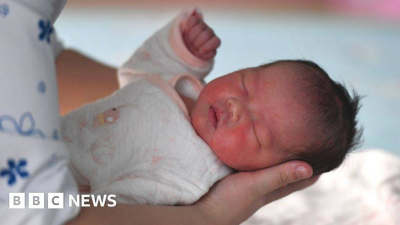BBC News Top Stories-World China records population decline for second straight year
January 17, 2024 4 min 741 words
这则报道揭示了中国连续两年的人口减少,引发对全球第二大经济体未来增长的担忧。尽管人口减少速度迅猛,但专家指出,这是由于城市化加速和历史低生育率。中国遵循其他快速去工业化国家的模式,但变化速度较快。专家指出,由于生育率低,人口停止增长并开始下降在所料之中。政府已实施一系列政策和激励措施,但对年轻人而言,生活成本和职业优先事项仍是生育的阻力。新冠疫情加速了出生率下降,但专家认为经济问题是更大的因素。中国经济在2023年面临严重困境,包括房地产危机、消费下降和创纪录的青年失业。人口减少可能加剧对老龄化劳动力的压力,但专家认为中国有时间和资源来管理这一转变。报道揭示了中国在人口和经济层面的交汇点,这值得深入关注。
China's population has declined for a second consecutive year, underscoring concerns about the future growth of the world's second-largest economy.
Data released on Wednesday showed a population of 1.409 billion by the end of 2023 - a 2.08m decrease from 2022.
The most recent decline is double that of the previous year, which marked the first population drop in 60 years.
But experts say this fall is expected given the country's expanding urban class and record-low birth rate.
China is following the pattern of other countries that have rapidly deindustrialised, experts say, although the pace of change has been quick.
"It's not a surprise. They've got one of the lowest fertility rates in the world so this is just what happens - the population stops growing and starts to decline," said Prof Stuart Gietl-Basten, a population policy expert at the Hong Kong University of Science and Technology.
"It's kind of locked in now… this is just the next year in this new era of population stagnation or decline for China."
Beijing on Wednesday said the birth rate was now down to 6.39 per 1,000 people on par with other advanced East Asian nations such as Japan and South Korea.
The country has seen falling birth rates for decades - after imposing in the 1980s a controversial one child-policy to control over-population at the time.
The government lifted the policy in 2015 to try and stem the population fall, and has brought in a series of other incentives too such as subsidies and payments to encourage people to start families. In 2021, it further relaxed the limit to allow couples to have up to three children.
However, the policies have borne little impact with young people in modern cities citing deterrents like the cost of living and career priorities after a three-year Covid period.
"My husband and I do want to have a kid but we can't afford it for now," said Wang Chengyi, a 31-year-old woman in Beijing.
She told the BBC she and her partner needed to save money for another three years to provide for the costs of having a child - taking into account school expenses in particular.
"I do want to get pregnant while I'm young as it's better for my health. However, I just don't have enough money for now so I have to postpone. It's a shame and I feel panic over it sometimes," she said.
Experts on Wednesday cited the impact of the pandemic in accelerating the decline in new births. However, they suggested that the underlying economic issues were a greater factor.
Chinese internet users also flagged cost pressures on Wednesday.
"If you let people live more easily, with more security, of course there will be more people wanting kids," one user wrote in a top-liked comment on Weibo.
China's economic woes came to the forefront in 2023, with the country battling a widespread property crisis, falling consumer spending and record youth joblessness in the aftermath of the pandemic.
Annual data on Wednesday confirmed the struggles - showing the economy had grown at one of its slowest rates in more than three decades - with GDP expanding at 5.2% to hit 126 trillion yuan ($17.5tn; £13.8tn) in 2023.
This marked the weakest performance since 1990 - excluding the pandemic years - which saw a record-low 3% GDP growth rate in 2022.
The latest population data is likely to reinforce some fears about the economy - with China having long relied on a now ageing workforce as a key driver of its economy.
The country is facing increased pressure on its healthcare and pension systems as its retiree population grows - projected to increase 60% to 400 million by 2035.
But experts say the country has time and resources to manage the transition in its workforce.
"China is no different to other countries that have deindustrialised and moved into the service sector. The population becomes more educated and skilled and healthier, and they want to do other jobs rather than work in factories or construction," said Prof Gietel-Basten.
The government is aware of this and has planned for this over the past decade and so it's expected to continue with this kind of direction."
Once the world's most populous nation, China was overtaken by India last year according to the UN. India's population stands at 1.425bn.

